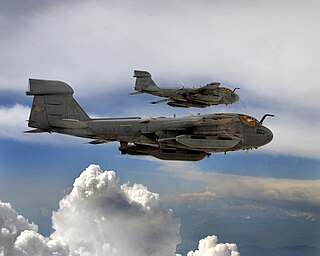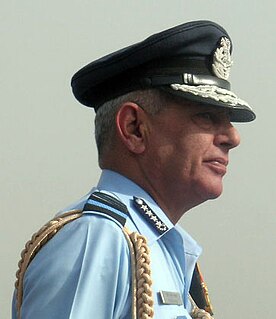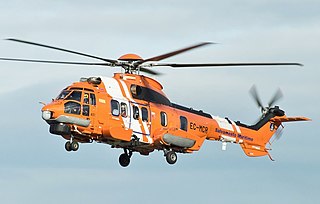
A winch is a mechanical device that is used to pull in or let out or otherwise adjust the tension of a rope or wire rope.

A gondola lift is a means of cable transport and type of aerial lift which is supported and propelled by cables from above. It consists of a loop of steel wire rope that is strung between two stations, sometimes over intermediate supporting towers. The cable is driven by a bullwheel in a terminal, which is typically connected to an engine or electric motor. They are often considered continuous systems since they feature a haul rope which continuously moves and circulates around two terminal stations. In contrast, aerial tramways solely operate with fixed grips and simply shuttle back and forth between two end terminals. Depending on the combination of cables used for support and/or haulage and the type of grip, the capacity, cost, and functionality of a gondola lift will differ dramatically. Because of the proliferation of such systems in the Alpine regions of Europe, the Cabinovia (Italian) or the French name of Télécabine are also used in English texts. The system may often be referred to as a cable car.

The Cavalese cable car disaster of 1998, also known as the Strage del Cermis, occurred on February 3, 1998, near the Italian town of Cavalese, a ski resort in the Dolomites some 25 miles (40 km) northeast of Trento. Twenty people died when a United States Marine Corps EA-6B Prowler aircraft, flying too low and against regulations, cut a cable supporting a cable car of an aerial lift.

Piper Alpha was an oil platform located in the North Sea approximately 120 miles (190 km) north-east of Aberdeen, Scotland. It was operated by Occidental Petroleum (Caledonia) Limited and began production in 1976, initially as an oil-only platform but later converted to add gas production.

Alexander L. Kielland was a Norwegian semi-submersible drilling rig that capsized while working in the Ekofisk oil field in March 1980, killing 123 people. It was a platform of the Pentagone series.

The Singapore Cable Car is a gondola lift providing an aerial link from Mount Faber on the main island of Singapore to the resort island of Sentosa across the Keppel Harbour. Opened on 15 February 1974, it was the second aerial ropeway system in the world to span a harbour, after Port Vell Aerial Tramway in Barcelona, which opened already in 1931. However, it is not the first aerial ropeway system to span the sea. For instance, Awashima Kaijō Ropeway in Japan, built in 1964, goes over a short strait to an island. Although referred to by its operators as a cable car, the listed system is in fact a monocable gondola lift and not an aerial tramway. In 2020, a round-trip ticket cost SGD 35 for adults and SGD 25 for children.

A helicopter hauldown and rapid securing device (HHRSD) or beartrap enables helicopters to land on and depart from smaller ships in a wide range of weather conditions.
The following lists events that happened during 1983 in Singapore.

771 Naval Air Squadron of the Fleet Air Arm was formed on 24 May 1939 at Lee-on-Solent as a Fleet Requirements Unit with 14 Fairey Swordfish TSR biplanes. The Squadron carried out various exercises with ships and provided towed targets for naval air gunners and was decommissioned on 22 March 2016.

Air Chief Marshal Fali Homi Major, PVSM, AVSM, SC, VM, ADC served as the 21st Chief of the Air Staff of the Indian Air Force, taking office on 1 April 2007, and becoming the first helicopter pilot in the service to be promoted to the office of Chief. He retired on 31 May 2009, and was succeeded in office by Air Chief Marshal P V Naik.
Bristow Helicopters Limited is a British civil helicopter operator originally based at Aberdeen Airport, Scotland, which is currently a part of the U.S.-based Bristow Group which in turn has its corporate headquarters in Houston, Texas, US.

The 120 Squadron "Kestrel" is a helicopter squadron of the Republic of Singapore Air Force based at Sembawang Air Base. First formed in 1969, it is the first and oldest RSAF operational squadron in service. The squadron goes by the motto of "Strive To Achieve". Since 2006, it operates the AH-64D Apache Longbow attack helicopter and has participated in Singapore's National Day Parade together with 127 Squadron CH-47SD Chinook for the traditional National Flag Fly Pass.

The Airbus Helicopters H225 is a long-range passenger transport helicopter developed by Eurocopter as the next generation of the civilian Super Puma family. It is a twin-engined aircraft and can carry up to 24 passengers along with two crew and a cabin attendant, dependent on customer configuration. The helicopter is marketed for offshore support and VIP passenger transport duties, as well as public service missions.

Rescue is a 13-part documentary series created, directed and filmed by Paul Berriff. It focused on the air-sea rescue work of "Rescue 137", a Sea King belonging to 202 Sqn, Royal Air Force Search and Rescue Force in and around their base at RAF Lossiemouth, Scotland and the North Sea over a period of a year between 1988 -1989.

The Cavalese cable car disaster of 1976 is the deadliest cable car crash in history. On 9 March 1976, the steel supporting cable broke as a fully loaded cable car was descending from Mt. Cermis, near the Italian ski resort of Cavalese in the Dolomites, 40 km (25 mi) north-east of Trento.

G-BEID was a Sikorsky S-61N helicopter of British International Helicopters which made a controlled ditching in the sea 29 nmi northeast of Sumburgh on 13 July 1988 following an engine fire. There were no fatalities.

Satan's Triangle is a 1975 American made-for-television mystery horror film directed by Sutton Roley and produced by ABC. The plot involves a United States Coast Guard helicopter sent to answer a distress call from inside the Bermuda Triangle.

The Saint-Étienne-en-Dévoluy cable car disaster occurred on 1 July 1999 in Saint-Étienne-en-Dévoluy, France, when a gondola which was being operated on a privately owned aerial tramway detached from the cable it was traveling on, and fell into the valley below. The accident killed all twenty people on board. The death toll was equal to that of another cable car accident in Italy which occurred one year previously. The disaster remains the deadliest cable car accident in France, and one of the deadliest such incidents anywhere in the world.

On 14 September 1982 a medical evacuation helicopter flight operated by Bristow Helicopters crashed during the early hours of the morning in driving rain and poor visibility over the North Sea. All six crew members on board died when their aircraft plunged into the sea near the Murchison platform while trying to locate the Baffin Seal seismic survey vessel.
MFV Elinor Viking was an Aberdeen trawler that operated between 1974 and 9 December 1977 when it wrecked on the Ve Skerries, Shetland. The eight crewmembers were rescued by a volunteer helicopter crew from Sumburgh Airport.

















